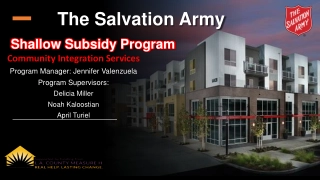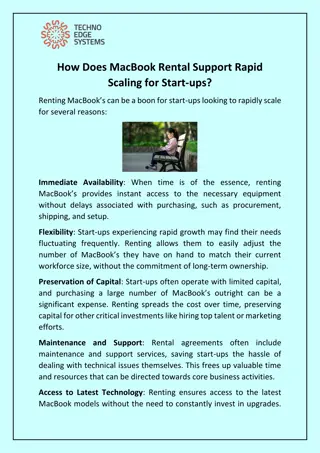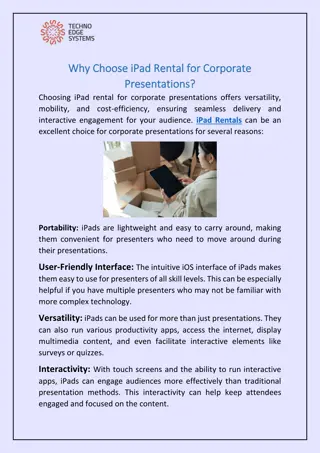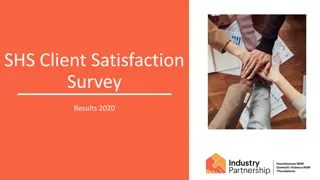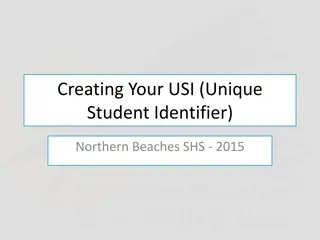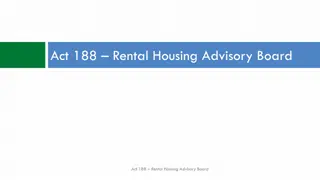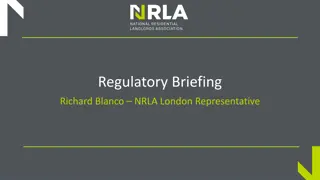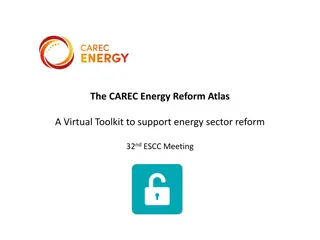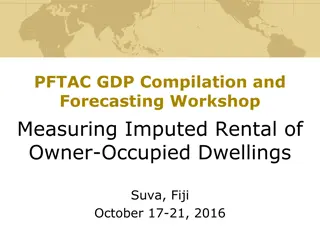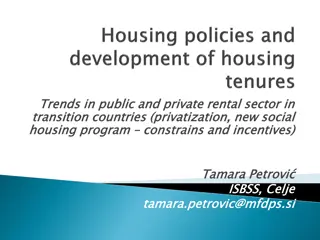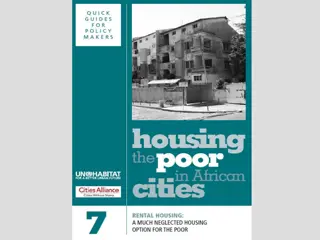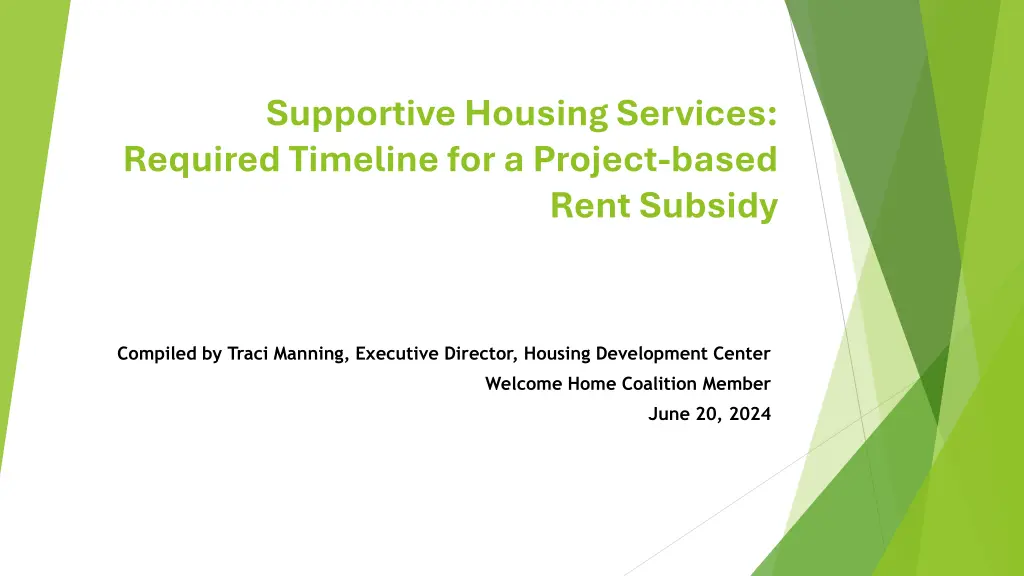
Timeline for Project-Based Rent Subsidy in Supportive Housing Services
"Explore the required timeline for implementing a project-based rent subsidy in supportive housing services, as compiled by Traci Manning, Executive Director of the Housing Development Center. The timeline covers key milestones from Measure Passed by Voters to Initial Projects Complete Construction and more. Learn about the objectives and assumptions guiding this timeline for affordable housing development."
Download Presentation

Please find below an Image/Link to download the presentation.
The content on the website is provided AS IS for your information and personal use only. It may not be sold, licensed, or shared on other websites without obtaining consent from the author. If you encounter any issues during the download, it is possible that the publisher has removed the file from their server.
You are allowed to download the files provided on this website for personal or commercial use, subject to the condition that they are used lawfully. All files are the property of their respective owners.
The content on the website is provided AS IS for your information and personal use only. It may not be sold, licensed, or shared on other websites without obtaining consent from the author.
E N D
Presentation Transcript
Supportive Housing Services: Required Timeline for a Project-based Rent Subsidy Compiled by Traci Manning, Executive Director, Housing Development Center Welcome Home Coalition Member June 20, 2024
Who is Housing Development Center? HDC is a nonprofit consulting group formed in 1993 that works with mission-driven organizations to create and sustain affordable homes and community places. HDC offers project management, training, and technical services to support the short-term and long-term goals of its nonprofit and public partners. At any one time, HDC is working on 30 different affordable housing properties around Oregon and SW Washington.
Goal of this timeline The information in this presentation serves to inform the real outcomes that will be impacted by what length of the SHS Measure sunset is decided in the potential measure reform being discussed at Metro.
YEAR 0 Measure Passed by Voters
Year 1 or 9-12 months Initial projects selected: Assumptions Each jurisdiction that will be offering project-based rental subsidies will be able to work through the implementation of the measure and issue a request for proposal (RFP) relatively shortly after the measure passes. There will be just a few projects able to submit proposals initially due to uncertainty about ballot measure passing, and the alignment of the RFP timing with already underway development schedules. Future offerings would be rolling or be predictable in timing and scope so that developers can plan to include SHS funded units in their properties.
2 Years Selected projects complete capital stack: Assumptions This is the most difficult timeframe to predict. It depends on where the selected projects are at in their development process, and fund availability. For purposes of this timeline, I assumed a typical project is 3-9 months from application of all funds and 3-9 months for notice of award of all funds.
3+ Years Initial projects begin construction: Assumptions Oneyear from completing capital and subsidy stack to construction start is a little faster than average.
5-6 Years Initial projects complete construction, lease-up, and convert to permanent financing: Assumptions Includes a 12-18 months construction period depending on the size of the project, 6-9 months for lease up and 3 months for stabilization prior to eligibility to convert to the permanent loan. Affordable housing lenders require that any Housing Assistance Payment contract equal the term of the permanent loan if the payment of the debt is dependent on income generated by the rent subsidy. Typical projects will include Low Income Housing Tax Credits (LIHTC), which have a 15-year compliance period. The loan term on these projects is generally a minimum of 17 years to include the full compliance period plus sufficient additional time for the investor exit and refinance. If the payment of the debt is not dependent on the rent subsidy, the term loans will be smaller, fewer units will be produced, and substantial private leverage will be left on the table.
Year 7-22 Permanent Loan Period Assumptions Owners will be obligated to make a fixed number of units available for people meeting SHS criteria as long as timely, appropriate referrals and supports remain in place. A Housing Assistance Payment contract will guarantee rent payments that escalate with unit rents. Rent escalation will align with the regulatory requirements of the project s capital funding and the lender-approved operating proforma. Services will be adequately funded and available to all SHS unit residents for the full period the tenants are living in the units. A risk mitigation program will be available to defray costs incurred by the property over and above typical expenses.
Year 23+ End of permanent loan/rent subsidy term required for the initially selected projects Assumptions Owner obligations for setting aside units will end unless new agreements are negotiated that meet the expectations of the refinanced loan s lender. Tenants remaining in units that still require rent subsidy to pay the unit s rent will be assisted to transition to another rent source or an an available unit they can afford. From project selection to the end of the project s loan term is estimated to be 22 years. Once there is less than 22 years remaining before the sunset of the tax: a) project selection be limited to a small subset of projects that will work with a shorter development or loan term, b) the methodology for guaranteeing rent assistance must change, or c) the funding source for the rent assistance must be extended or changed.
CONCLUSION Considering that the assumptions in this timeline are best case scenarios and we know that things don t always play out as best-case scenario, it is recommended that the new SHS Measure sunset length be a minimum of 25 years to allow for sufficient creation of new deeply affordable apartments to make an impact on our regional homelessness. A 30-year extension will allow for breathing room and ease of implementation.




